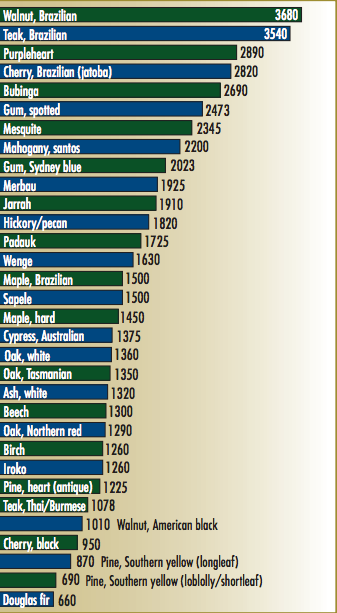
One of the phrases that comes up a lot when you’re researching hardwood floors is Janka hardness.
What does a Janka hardness rating actually mean, and how can it help homeowners, designers, and contractors make decisions?
What is Janka hardness?
A Janka hardness rating measures the resistance of a species of wood to denting and wear in order to determine its viability as flooring.
The test is performed by forcing a .444-inch steel ball into a plank of wood until half the diameter of the ball is embedded.
The force required to embed the steel ball to this point is measured in pounds-force (lbf) in the United States.
How can it help you make decisions about flooring?
Janka hardness ratings are useful for contractors, homeowners, and designers who have to figure out the durability of various species.
Hardness ratings provide a standard to which the durability of several species can be compared to one another, which comes in handy.
Let’s say that you’re working with a homeowner who is split between Brazilian cherry and white maple. They have four young kids and two dogs. You can use a Janka hardness chart to pit Brazilian cherry against white maple and suggest that they go with Brazilian cherry since it is much harder than white maple, and might stand up better to abuse from their kids and pets.
What are the hardest species available?
Take a look at this Janka hardness scale:

Credit: NWFA
You can see that as far as domestic species go, hickory is one of the most durable species at 1820 lbf. Longleaf southern yellow pine — which is popular for its knotty character — makes an appearance towards the bottom of the list at only 870 lbf.
If the homeowner or project manager requires a species that is relatively durable, you can simply take a look at a Janka hardness rating chart to come up with some ideas.
Although the Janka hardness rating of a wood is a pretty good measure of its durability, a number of other factors play into the overall durability of each plank, including the cut of the wood (quarter sawn vs. plain sawn) and the finishing system that is used.
——–
Janka hardness is an objective system of measuring a wood’s durability. It makes it easy to compare different species to one another and select the best fit for each and every project.